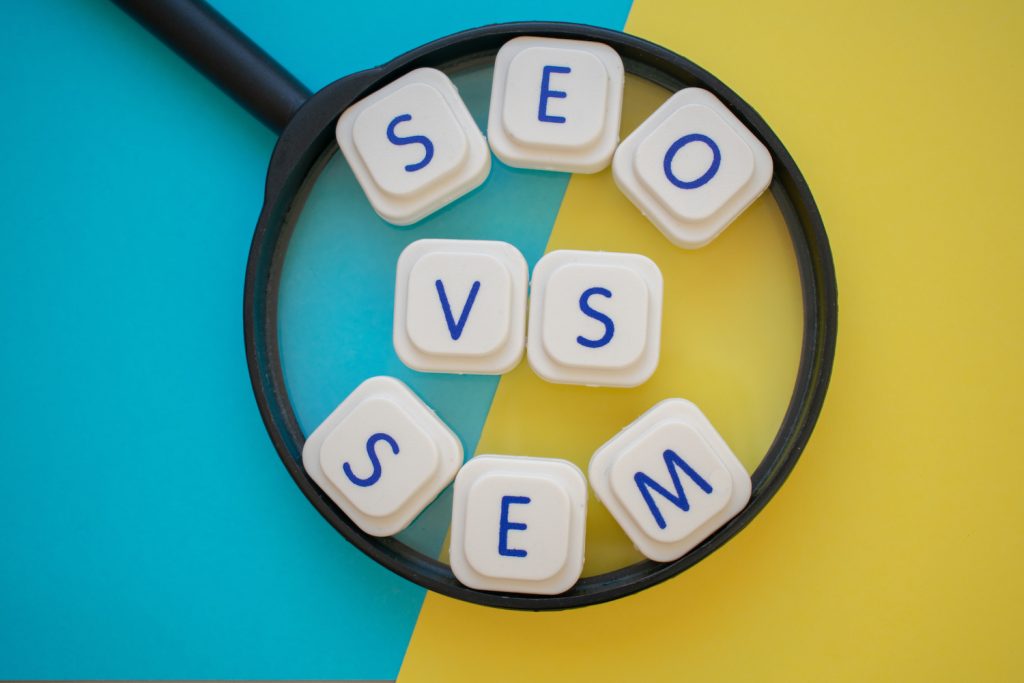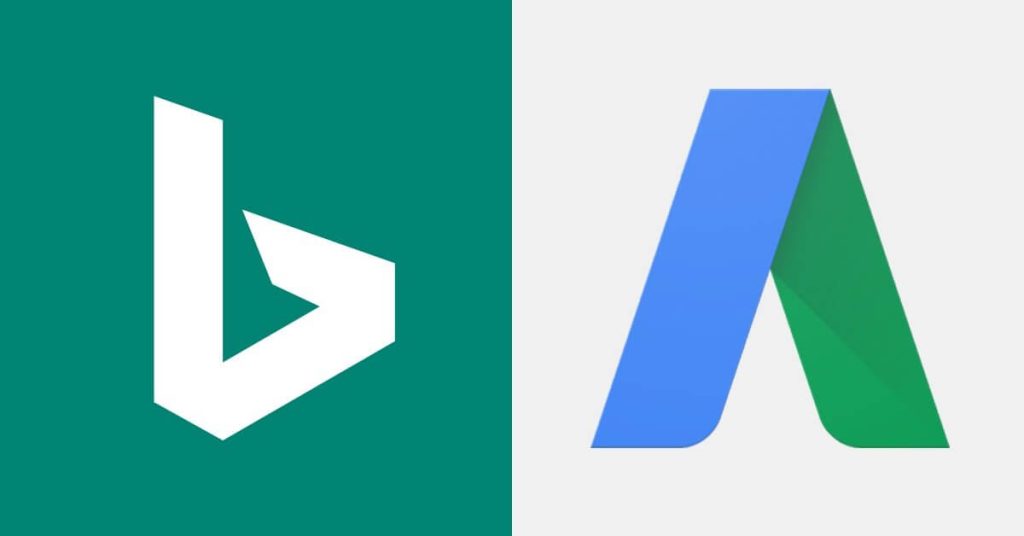

Search engine marketing (SEM) is a type of digital marketing strategy that promotes services and products by improving their visibility in search engine results pages (SERPs). SEM involves both paid advertisements in SERPs and organic optimisation of content to improve site rankings.
It’s safe to say that it’s a popular marketing strategy because it can target a wide range of customers at different stages of the buying cycle. No matter what your business goals are, search engine marketing can be a powerful tool to help you reach the right audience and grow your business in a highly competitive marketplace.
In this post, we will dive deeper into SEM and guide you on how to make the most out of your search engine marketing strategy.
As mentioned, SEM or search engine marketing is an online marketing strategy that involves paid advertisements that appear on SERPs (search engine results page). Businesses bid on keywords that their customers might search for when looking for their particular product or service. This can be everything from products like school shoes to services like pest control near me.
The targeted ads will then appear at the top of search results alongside organic content when users search for these specific keywords. Also known as pay-per-click (PPC) ads, they include both text-based and product-listing ads, like Shopping ads on Google.
The biggest advantage of SEM is that advertisers can place their ads directly in front of motivated customers looking to make a purchase, whether that’s for school shoes or pest control. It’s a highly effective marketing tool and a great way to grow your business.

So, what’s the difference between these two marketing strategies? SEO doesn’t require businesses and individuals to pay Google for clicks and traffic. Instead, they get a free spot in the search results through relevant keyword-rich content. In contrast, search engine marketing is paid marketing. This means you pay Google or other search engines to show your ads in the SERPs. Remember that SEM results appear above SEO results in search engines, too.
The good news is that SEM and SEO work harmoniously together, and your online marketing strategy should include both. With SEO, you can earn evergreen traffic, while search engine marketing is an efficient way to drive conversions.
Pay-per-click ads are a type of paid advertising where you pay when someone clicks on your ad. They are one important piece of the search engine marketing puzzle, as SEM campaigns consist of several factors that aim to get your site to rank higher in the search engines.

Keyword research is an essential part of search engine marketing. To ensure you get the most out of your SEM efforts, you must identify keywords your customers use to search for your product or service. This means you need to know how to find the top 100 relevant keywords. Then you need to analyse the competition in those keywords and match it with your SEM strategy.
To someone unfamiliar with the concept, PPC may sound similar to SEM, but this is not the case. PPC is a type of search engine marketing where you pay when someone clicks on your ad.
On the other hand, search engine marketing consists of activities that get your site to rank higher in the search engines.
High conversion rate Because SEM places your product or service directly in front of motivated customers, expect higher conversion rates compared to SEO content.
Cost-effective The good thing about the PPC model is that you only pay when someone clicks on your ad. It’s one of the most cost-effective advertising strategies available as you set the budget.
Improved ranking Increased traffic to your website improves your rank and Google trust signals. It’s a great way to increase brand awareness and attract new customers.
Personalisation With SEM, you can target your ads to specific audiences based on demographics, interests and lifestyle.

Google Search Network: This focuses on search-related websites Google owns.
Google Display Network This consists of other properties like Gmail and YouTube.
Every time a user enters a search query into Google, an ad auction occurs. This is when Google determines where the keywords you bid on appear in the search queries. They will only appear on commercial intent searches in front of an audience ready to buy. On the other hand, informational searches will only show organic results.
Several factors influence whether Google determines your ad wins the auction, including:
Maximum bid: The maximum amount you’re willing to pay for every click on the ad.
Quality score: This is a formula that Google Ads uses to determine ad relevance and quality. It can include your website’s UX and the relevance of the ad’s landing page.
Ad extensions: The additional information you provide in your ad.
Ad rank: This is a combination of your bid, ad quality and landing page. You need to meet a minimum quality threshold for your ad to appear in a higher position.
Ad context: This includes information on the user searching for a particular keyword, like their location, the search time, the device used and more.
Note: The quality score is important because it ensures that the ads presented to users are helpful and relevant.
SEMrush is one of the top SEO tools businesses and individuals worldwide use. But it’s also a useful tool for SEM as you can do competitor research to identify your main paid search competitors. Then you can determine which keywords they are bidding on and the marketing concepts they focus on. You can also analyse their regional presence to determine the amount of money they usually bid on specific keywords.
All of these elements are crucial to your SEM campaign, especially if you’re only starting and want to understand how you can gain an advantage over your competitors.
One of the most useful features of Google Trends is that it allows you to monitor both trending and not-so-popular keywords, and is an essential tool for keyword research. After all, you don’t want to spend money on keywords that won’t have a big impact. We highly recommend Google Trends, especially for eCommerce businesses, as it provides insights on product or service interest in a certain area and recommends relevant keywords for your business.
SpyFu is another useful keyword research tool that helps you to discover the keywords and sarch terms your competitors are bidding on. You can also see which ad tests they have run. SpyFu is very easy to navigate. Just enter the domain and all the keywords the website is targeting with paid ads will appear, as well as the ad variations used. You can also use SpyFu to track your own paid and SEO rankings on several search engines.
WordStream is a helpful place where you can research, measure and optimise your ads. Access advanced reporting features for data analysis and tools to help you create excellent ads. Additionally, the platform includes alerts and workflow tools that will help you with better decision-making for your SEM campaigns.
One of the best SEM tools available to conduct keyword research is Google Keyword Planner. This tool gives you the best insights into your SEM strategies’ projected performance alongside suggested target keywords that may be missing from your current SEM campaigns.
With Google Keyword Planner, you can delve into keyword volume, Cost Per Click, and estimated Cost Per Conversion alongside recommendations of other keywords by users searching similar terms.
HubSpot has ad tracking software that allows you to gauge how your ads are influencing your contacts in the buyer’s journey. With this information, you will be able to understand which ads do and don’t work.

To help you better understand and implement SEM and paid advertising, here are some strategic tips to use to maximise your exposure and affordably reach your potential customers.
Keyword research: Use the aforementioned tools to identify the best keywords and search terms.
Budget: Determine your maximum bid amount.
Google Ads account structure: Keep reading to learn how to effectively structure your Google Ads account.
Landing page: Your landing page should include important keywords in the content and provide a good UX.
Create: Next, you need to create the ad, whether it's text or product-based. Ensure it includes an optimised headline and a click-worthy description.
Bid: It's time to bid and enter into an ad auction.
Monitor: Use tools like Google Analytics to monitor the ad's performance and make adjustments when necessary.
One of the most important steps in your SEM strategy is to structure your Google Ads account so you control how you want your ads to be triggered and when and where you want them to appear. A good ad account structure leads to better quality scores, which means better results and lower costs. Keep in mind that the quality score says a lot about how much Google “likes” you. Effectively setting up your Google Ads account structure leads to better organisation and optimisation of your campaigns.
A Google Ads account structure has five distinct elements, and we go into more detail about each one below:
Other important factors to consider when structuring your Google Ads account:
Consider how your website is structured, like the number of tabs and pages. You should also consider the value of different product pages over others. If you have a well-structured website, it’s a good idea to structure your Google Ads in the same way.
Consider your products or services and structure your Google Ads in the same way.
If location is vital to your business, then you need to structure your Google Ads account based on this.
There are other strategies you can use to structure your account. But it all comes down to a rational structure that will be easy for you to track, manage and optimise.
Ad campaigns focus on similar products or services, while ad groups allow each campaign to be further subcategorised for relevance. Each campaign will consist of ad groups with keywords that relate to your text ads and your landing page. For example, ad campaigns for a department store might include different departments or seasons.
For each ad campaign, you will create relevant and more specific ad groups. There’s no particular number of ad groups you can have for your campaign, but it’s best to ensure that it’s manageable. These ad groups will also contain keywords that will be used to trigger your ad copies and direct users to a specific landing page. Once again, for a department store, they might have a women’s fashion ad campaign and then ad groups for clothing, accessories and undergarments.
Keywords must be under each ad group. They are important because they control the way the ad is triggered. Every keyword you use will have a max cost-per-click (CPC), match type and quality score. This is why keyword research is important, as it gives you a good understanding of match types. It’s also essential to take the time to refine and optimise your keyword strategy over time.
The ad text is the actual copy that will appear when your ad is triggered, and every ad group must have two to three ads per group, which directs users to the same landing page. When creating your ad text, refer to Google Ads guidelines to ensure the ads get approved. Your ads should be specific and compelling and reflect the landing page they are directed to.
Landing pages are your ad’s destination. Make sure to be strategic with your landing pages to ensure that every ad goes straight to the relevant page. This will significantly improve your ad rank.
Search intent is one of the most important aspects of SEO and SEM that is often overlooked. Search intent ultimately looks at the intent behind your chosen keywords and search terms and what this shows about the content, product or service they are looking for, as well as their stage in the customer journey.
Informational intent refers to searches where users are seeking specific information or answers to their questions. These users are looking to learn more about a topic, find solutions, or understand a concept.
Example: A user searches for “how to improve running stamina.” They’re looking for tips and advice on increasing their endurance for running.
Commercial investigation intent involves users who are actively researching products or services before making a purchase decision. They are comparing options, reading reviews, and seeking information to guide their buying choices.
Example: A user searches for “best budget smartphones 2023.” They’re in the market for a new smartphone and are researching different models and their features.
Navigational intent searches occur when users are looking for a specific website or page. They already have a particular destination in mind and use search engines to quickly locate it.
Example: If a user searches types in the search term “Facebook login.” They want to access their Facebook account and are using the search engine to find the login page.
Transactional intent involves users who are ready to make a purchase or take a specific action. These users are often looking for product details, pricing, and ways to buy or sign up.
Example: A user searches for “buy Nike Air Zoom Pegasus 38.” They’re interested in purchasing a pair of specific running shoes and are looking for a place to buy them.
Understanding search intent is crucial for both SEO and SEM because it helps tailor content and ads to match the user’s needs and stage in the customer journey. In PPC advertising, aligning your ads with the user’s search intent leads to higher relevance, click-through rates, and conversions, resulting in a more effective and successful advertising campaign.
Negative keywords should not be an afterthought and must be included in your keyword research process to ensure you don’t blow out your paid advertising budget one week into running your campaigns on irrelevant keywords and misaligned keyword intent.
Imagine you’re running an SEM campaign to attract potential clients for your digital marketing services. You bid on keywords like “digital marketing agency,” “online advertising services,” and “SEO strategies.” However, you want to avoid inquiries from job seekers seeking positions within your agency, as you’re focused on acquiring clients, not employees.
In this scenario, you might choose to add "jobs" or "careers" as negative keywords. By doing so, your ads won't appear for searches like "digital marketing agency jobs" or "marketing careers in digital advertising." Instead, your ads will only be displayed to individuals looking for marketing services, increasing the chances of attracting potential clients.
The best and most effective SEM is the kind that is geared toward a long-term approach, rather than one that’s short-term and designed to produce quick results. A long-term SEM approach involves building a solid foundation of good search engine marketing practices, producing excellent content and then providing it to users in a consistent manner that is designed to attract and retain attention.
Ready to see Search Engine Marketing work? If you’re starting with your search engine marketing or need a helpful boost, Evolving Digital is here to get those ads at the top of search results. Rest assured, we are an established PPC Agency that will bring in excellent paid search results for your business.
Our digital marketing agency is known for its excellent digital marketing strategy that boosts organic rankings for old and new customers. In SEM, we will help you find keywords, work on your PPC marketing and more. We will also create relevant content and navigate complicated algorithms to drive revenue to your business.
A shopping ad is an ad unit that is linked directly to an online store. This type of paid advertising is triggered by search queries and appears above and on the right-hand side of search results. They are highly identifiable, with visuals of the product advertising alongside price and promotion information.
Google determines the quality score depending on several factors, such as originality and authoritative content. It’s on a scale of 1 to 10, with 10 being the highest.
The maximum bid amount that you can pay for paid ads will be specified when you create an ad in your account. This type of ad is a cost-per-click ad format on Google. It appears next to related and relevant search results. Additionally, it can appear on the right-hand side of the search results page.
An effective way to appear at the top of the search engine results pages is via SEO and SEM. These two will improve your organic search results and get you on the first page of the SERPs (Search engine result pages). You can work with an agency that will push your website out there in front of your target audience.
ABOUT US
We’re not your standard digital marketing agency.
If you’re ready for your business to evolve, you’ve come to the right place
WHAT WE DO
GET IN TOUCH
© Copyright 2024 Evolving Digital
